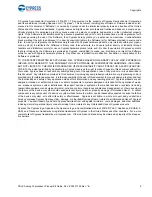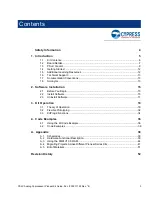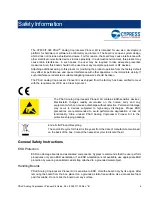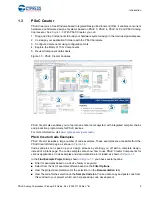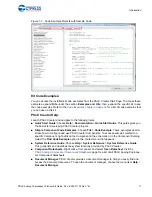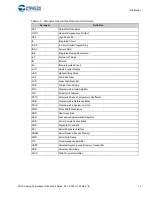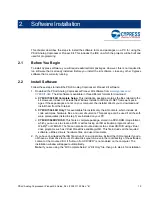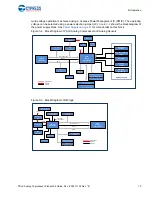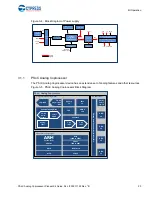
PSoC Analog Coprocessor Pioneer Kit Guide, Doc. # 002-11190 Rev. *B
5
1.
Introduction
Thank you for your interest in the CY8CKIT-048 PSoC
®
Analog Coprocessor Pioneer Kit. This kit
enables you to evaluate and develop your application using the PSoC Analog Coprocessor device
family. The PSoC Analog Coprocessor simplifies the design of sensor-based systems by delivering a
scalable and reconfigurable architecture that integrates programmable Analog Front Ends (AFEs). It
has a signal processing engine (32-bit ARM® Cortex®-M0+) to calibrate and tune the AFE in
software. Additionally, the PSoC Analog Coprocessor enables applications to send aggregated, pre-
processed, and formatted sensor data over serial communication interfaces to host processors.
Systems that use multiple analog sensors usually require multiple specialized ICs to implement the
AFE, which increases BOM cost and PCB size. Systems designed for IoT applications must
combine data from multiple sensors to enable new sensing capabilities, commonly known as sensor
fusion. Sensor fusion solutions often require custom AFEs. The PSoC Analog Coprocessor reduces
the need for specialized ICs, offering the ability to create custom AFEs in a single-chip solution.
shows the analog sensors interface on PSoC Analog Coprocessor Pioneer Kit.
The PSoC Analog Coprocessor Pioneer Kit offers footprint-compatibility with Arduino™ shields and
baseboards. This kit features five analog sensors. They are pyroelectric infrared (PIR) motion
sensor, thermistor, humidity sensor, ambient light sensor (ALS), and inductive proximity sensor
(IPS). It has an RGB LED, two user-configurable push-button switches, one reset push-button
switch, an onboard programmer/debugger with USB-UART/I2C bridge, and a Cypress F-RAM™.
This kit supports operating voltages of 1.8 V, 3.0 V, 3.3 V, or 5 V.
If you are new to PSoC Creator, see the documentation on the
. You can
also refer the application note,
AN211293 – Getting Started with PSoC Analog Coprocessor
, which
gives an introduction to the PSoC Analog Coprocessor.
Figure 1-1. Analog Sensors


